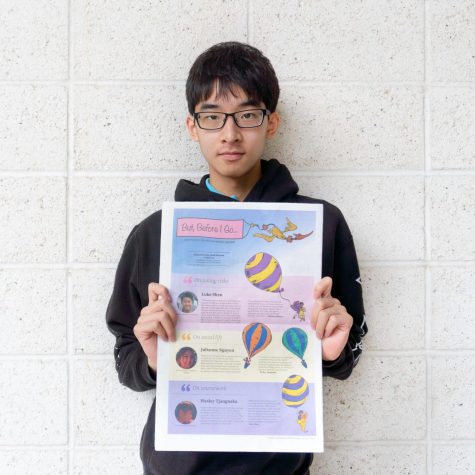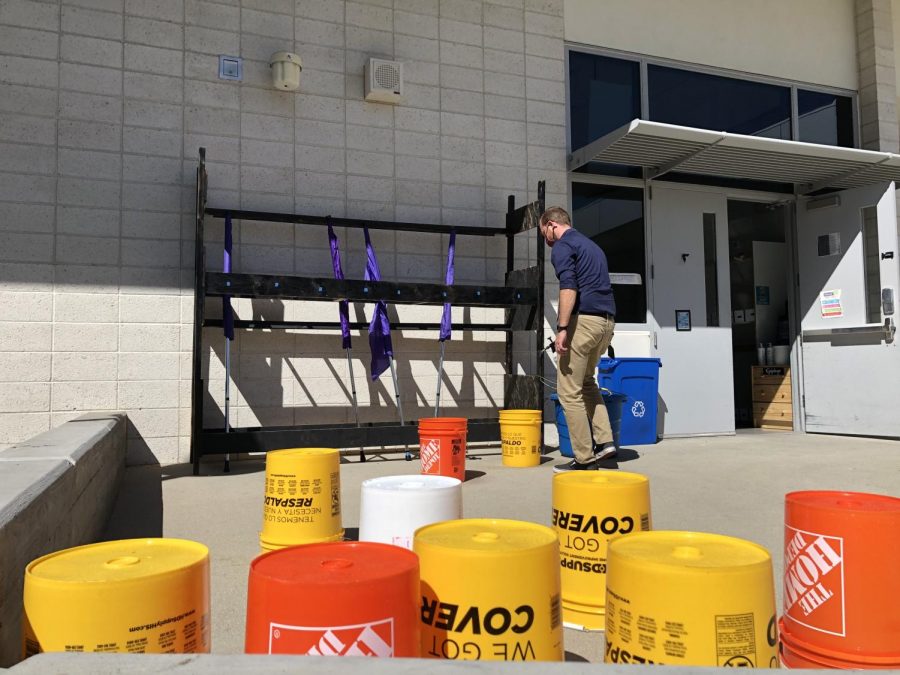Two Sticks and a Bucket Lend Musical Opportunities Amid Constraints
As a precaution against COVID-19, instrumental music teacher Kyle Traska sprays a series of bucket drums with cleaning solvent after a Wind Ensemble rehearsal. With one assigned to each student, the buckets offer unique flexibility in both maintenance and curriculum.
Wind Ensemble students take their seats outside the theater, gathering around instrumental music conductor Kyle Traska. No sound of brass instruments tuning or woodwinds trilling fills today’s air; instead, students shuffle as they set down a five-gallon container and two wooden sticks.
From the flute to the trombone, the wind instruments that these students usually play require blowing into a mouthpiece, which is of particular concern in the pandemic. As musicians’ breaths are laden with droplets of moisture that may elevate the risk of COVID-19 transmission, Portola High, prompted by statements from California’s Department of Public Health, has barred students from playing wind instruments on campus, although string ensembles have held full rehearsals in socially-distanced environments.
In the case of Wind Ensemble, this policy has led to innovation and improvisation. In the center of the circle of musicians, Traska takes a page from existing groups such as the Harvard Undergraduate Drummers and leads students to explore the nuances of African drum music through developing rhythmic awareness and explaining cultural backgrounds.
“It replaces a lot of what we learned in a lot of different ways … It teaches us a lot about the culture that surrounds percussion,” Wind Ensemble member and junior Chloe Moon said. “I’m looking forward to continuing to learn about and creating an entire ensemble with this percussion because music is most fun when you’re making it with other people.”
Though Traska’s rhythmic exercises may appear to diverge from the concert repertoires that Wind Ensemble prepared in the 2019-20 school year, fellow ensemble player and junior Henry Liu notes that the two connect in ways that go beyond the buckets themselves.
“Though we don’t realize it, we see a lot of these African rhythms in the music that we play today,” Liu said. “Listening to African rhythms, which are extremely new to me … I think it’s refreshing to get a new perspective on how you can play different instruments, especially percussion.”
One of the long-term goals of bucket drumming is to foster abilities that can easily translate into the curriculum of Wind Ensemble after COVID-19, according to Traska.
“The study of rhythms, the ability to listen to what other people are playing and how you can add your part to it is a super useful skill,” Traska said. “If we can just focus on one musical element for a little while, as soon as we get back into playing instruments, it’s going to go smoother.”
Your donation will support the student journalists of Portola High School. Your contribution will allow us to purchase equipment and cover our annual website hosting costs.

Justin Tang is the Portola Pilot’s Back Page Editor for the 2021-22 school year, his second and last on the team. Throughout the year, he’ll make sure...




